


xxxxxIt was in 1836, after a five-
CHARLES ROBERT DARWIN 1809 -
(G3a, G4, W4, Va, Vb, Vc)
Acknowledgements
Map (The World): licensed under Creative Commons. Author Sémhur – en.wikipedia.org/wiki/Charles_Darwin. Darwin: detail, watercolour by the English artist George Richmond (1809-
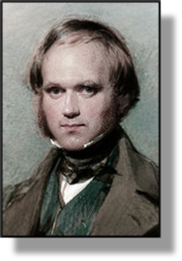 xxxxxAs we have seen, it was in 1831 (W4), as naturalist on board HMS Beagle, that the Englishman Charles Darwin began his five-
xxxxxAs we have seen, it was in 1831 (W4), as naturalist on board HMS Beagle, that the Englishman Charles Darwin began his five-
xxxxxDarwin was born in Shrewsbury of quite a distinguished family. His father was a highly respected doctor and his mother, Susannah Wedgwood, was the daughter of the pottery designer and manufacturer Josiah Wedgwood. And he was also the grandson of Erasmus Darwin, the eminent physician and naturalist. He attended Shrewsbury School, but showed little interest in his lessons, spending much of his time collecting insects and pieces of rock. And later, as a medical student at Edinburgh, he proved unable to cope with the trauma of surgical operations and eventually left the course. However, during his two years in Scotland he made friends with various members of staff and cultivated a keen interest in geology and marine life.
xxxxxIn despair, his father, fearing that he would be a disgrace to the family, sent him to Cambridge to study for the priesthood. Again, he neglected his studies, spending many hours riding and hunting, but it was there, too, that he was able to devote even more time to his interest in geology and natural history. Hexlearnt a great deal from his close friend John Stevens Henslow, professor of botany, and on gaining his degree in 1831, he accompanied the distinguished professor of geology, Adam Sedgwick (1785-
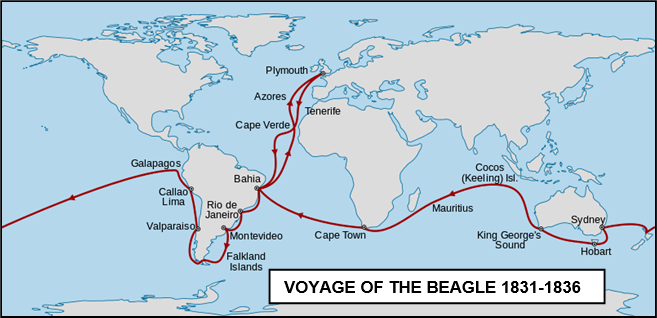
xxxxxThe scientific expedition was planned to take two years. In fact it lasted for five years and circumnavigated the globe via South America and the Pacific and Indian Oceans. Darwin was not a good sailor -
xxxxxIn his work as an amateur geologist he very quickly came out in favour of the argument put forward by the English geologist Charles Lyell in the early 1830s. This had maintained that the Earth’s surface had not been formed by sudden, short-
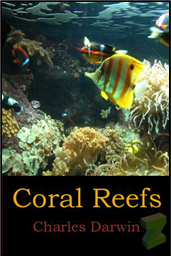
xxxxxThen later he put forward his own geological theory -
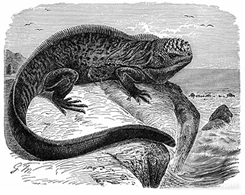 xxxxxHis refutation of the catastrophic theory met with strong opposition, but this was nothing compared to the condemnation that was to be heaped upon the ideas he developed in the field of natural history. His studies on the mainland of South America and on the islands of the South Pacific convinced him that, by means of a long, slow process of change, animals and plants had evolved from more primitive forms. He noticed that the fossils of extinct species that he discovered, though smaller in size, closely resembled living species within the same geographical environment, and during his period of detailed study on the Galapagos Islands, some 500 miles off the coast of Ecuador, he found ample evidence of this change or “mutation”. There he found
xxxxxHis refutation of the catastrophic theory met with strong opposition, but this was nothing compared to the condemnation that was to be heaped upon the ideas he developed in the field of natural history. His studies on the mainland of South America and on the islands of the South Pacific convinced him that, by means of a long, slow process of change, animals and plants had evolved from more primitive forms. He noticed that the fossils of extinct species that he discovered, though smaller in size, closely resembled living species within the same geographical environment, and during his period of detailed study on the Galapagos Islands, some 500 miles off the coast of Ecuador, he found ample evidence of this change or “mutation”. There he found 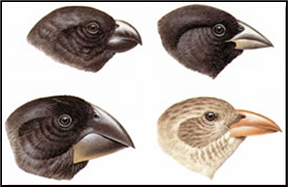 living creatures, such as the tortoise, the marine iguana (illustrated), and the mockingbird, which showed variations in structure and feeding habits from one island to another, despite similar climatic and physical conditions. He demonstrated this “adaptation” by what came to be known as “Darwin’s Finches”. He showed, for example, that according to the food available, some seed-
living creatures, such as the tortoise, the marine iguana (illustrated), and the mockingbird, which showed variations in structure and feeding habits from one island to another, despite similar climatic and physical conditions. He demonstrated this “adaptation” by what came to be known as “Darwin’s Finches”. He showed, for example, that according to the food available, some seed-
xxxxxBut these findings were to raise even more fundamental issues. Were there possible links, Darwin began to ponder, between distinct but similar species? Indeed, by means of modifications taking place over a vast period of time, could species have evolved from other species? And In the long, fierce struggle for existence, had existing animals and plants survived because they had adapted more efficiently to their environmental conditions and passed these advantages on to their offspring or seeds? In the life of animals and plants, had the fittest survived and the weak become extinct by a process of “natural selection”?
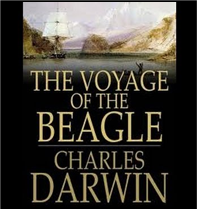 xxxxxIt was with these questions in mind that Darwin returned home in 1836, but his theory about evolution -
xxxxxIt was with these questions in mind that Darwin returned home in 1836, but his theory about evolution -
xxxxxIn 1839 Darwin married his cousin Emma Wedgwood, and three years later they settled at Downe House in Kent, just outside London. There, as a man of independent means, he was able to pursue his own topics of interest. He gave time to his theory of evolution, but he also worked on other natural history projects. Furthermore, his studies were hampered by a debilitating illness which he had caught, so it would seem, from the bites of a particular insect while researching in the pampas area of Argentina.
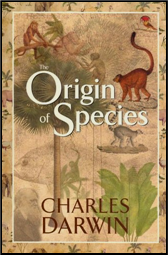 xxxxxIn 1842 he produced an outline of his theory for his friend Professor Henslow, but two years later he embarked on other work, including an eight-
xxxxxIn 1842 he produced an outline of his theory for his friend Professor Henslow, but two years later he embarked on other work, including an eight-
xxxxx“The book that shook the world”, as it came to be called, was sold out on the first day of publication, and had gone through six editions by 1872. In the past, other scientists had hinted at the idea of organic evolution, including the French biologist Jean Baptiste de Lamarck and Darwin’s own grandfather Erasmus, but none had presented the case in such depth, order and clarity. As a result, it proved a theory that many rejected out of hand. The very idea that animals and plants had slowly developed from simple forms which had existed millions of years ago was clearly contrary to biblical teaching, which held that the world was formed in 4004 BC, and that all living things were specially created in their present form. God was the creator and designer.
xxxxxControversy over the theory raged across the western world. As one would expect, the most vociferous opposition came from the Church. At a meeting at Oxford University, for example, held in 1860, the Bishop of Oxford, publicly refuted “Darwinism” (as it came to be known), but came off the worse in an argument with the English biologist Thomas Henry Huxley, Darwin’s faithful “bulldog”. Less easy to answer, however, were the doubts of a number of sceptical scientists. Some questioned the mechanism whereby these variations or mutations were achieved and passed on, whilst others argued that the theory was based on flimsy evidence. And many harboured doubts about the theory well into the 20th century.
xxxxxAlthough Darwin all but avoided the sensitive issue of human evolution in his Origin of Species, his evolutionary theory begged the question and needed a fuller answer. As we shall see, he was to give that fuller answer twelve years later in his Descent of Man, published in 1871 (Vb), a work which attempted to throw light on the “origin of man and his history”, and promptly added fuel to a controversy 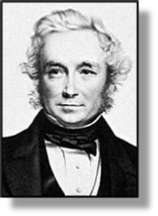 which was already burning bright.
which was already burning bright.
xxxxxIncidentally, in the formative years of his career Darwin was guided and encouraged by his older cousin William Darwin Fox, an entomologist, but it was the cleric-
xxxxx…… Amongxthe critics of Darwin’s theory of natural selection was his one-
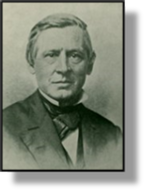
xxxxx…… Axfriend and firm supporter of Darwin was the leading American botanist Asa Gray (1810-
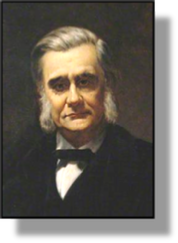
xxxxxThe English biologist Thomas Henry Huxley (1825-
xxxxxHis series of lectures on organic evolution did much to win over public support for Darwin’s theory, but in the 1860s he himself courted controversy with his Zoological Evidence as to Man’s Place in Nature, a work in which he suggested that apes were the closest relatives of humans. In 1869 he coined the term “agnostic” to explain his own attitude to religion. The novelist Aldous Huxley and the biologist Julian Huxley were his grandsons.
Including:
T.H. Huxley, Alfred
Russel Wallace
and Henry Bates

Va-
xxxxxIt was following research in the Amazon region and the Malay Archipelago that the Welsh naturalist Alfred Russel Wallace (1823-
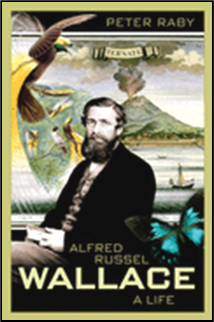 xxxxxIt was over a period of some ten years, 1848 to 1858, during expeditions to the Amazon and the Malay Archipelago, that the Welsh naturalist Alfred Russel Wallace (1823-
xxxxxIt was over a period of some ten years, 1848 to 1858, during expeditions to the Amazon and the Malay Archipelago, that the Welsh naturalist Alfred Russel Wallace (1823-
xxxxxIt was in February 1855, while working in Sarawak in Borneo, that Wallace wrote his essay On the Law Which Has Regulated the Introduction of New Species. During his research in both the Amazon region and in south-
xxxxxHowever, The Origin of Species, published in November 1859, proved a more scholarly and detailed study of the subject, and it was thus Darwin who was awarded the bulk of the credit for introducing a theory which plunged the science of natural history into turmoil. For his part, Wallace worked to gain wider acceptance of their basic ideas in works such as Contributions to the Theory of Natural Selection, The Geographical Distribution of Animals, and Man’s Place in the Universe.
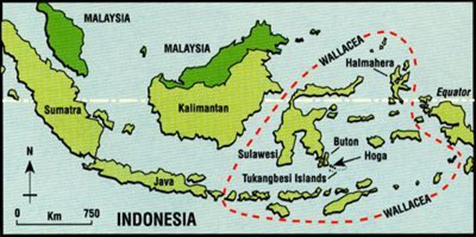 xxxxxIncidentally, while working in south-
xxxxxIncidentally, while working in south-
xxxxx…… The phrase “survival of the fittest” was not coined by either Wallace or Darwin, but was first introduced by the English philosopher Herbert Spencer after reading On the Origin of Species. In his Principles of Biology of 1864 he wrote: “This survival of the fittest, which I have sought to express in mechanical terms, is that which Mr Darwin has called ‘natural selection’ or the preservation of favoured races in the struggle for life.” ……
xxxxx…… Darwin did in fact use the term in a latter edition of On the Origin of Species, but it did not find favour amongst later biologists because survival itself was only seen as a part of the complex notion of natural selection, and thus tended to distort Darwin’s theory. However, as we shall see, Spencer’s System of Synthetic Philosophy, made up of nine volumes and written over thirty years, brought him international recognition during the 1870s and early 1880s.
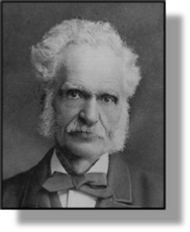 xxxxxOn his expedition to the Amazon region Wallace was accompanied by his friend the English naturalist Henry Bates (1825-
xxxxxOn his expedition to the Amazon region Wallace was accompanied by his friend the English naturalist Henry Bates (1825-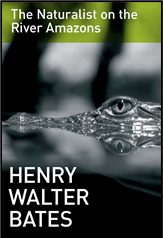 y worked independently and, over the next eleven years, Bates made a detailed study of insect life over a large area, sending back home some 14,000 specimens, the majority of which were then unknown to science. From 1864 he worked as the assistant secretary of the Royal Geographical Society, and he served twice as the president of the Entomological Society in London. He wrote a scholarly account of his work in Brazil in his The Naturalist on the River Amazons of 1863, and for his contribution to natural science he was elected a fellow of the Royal Society in 1881. The bulk of his collection of specimens is to be seen in the Natural History Museum in London.
y worked independently and, over the next eleven years, Bates made a detailed study of insect life over a large area, sending back home some 14,000 specimens, the majority of which were then unknown to science. From 1864 he worked as the assistant secretary of the Royal Geographical Society, and he served twice as the president of the Entomological Society in London. He wrote a scholarly account of his work in Brazil in his The Naturalist on the River Amazons of 1863, and for his contribution to natural science he was elected a fellow of the Royal Society in 1881. The bulk of his collection of specimens is to be seen in the Natural History Museum in London.


